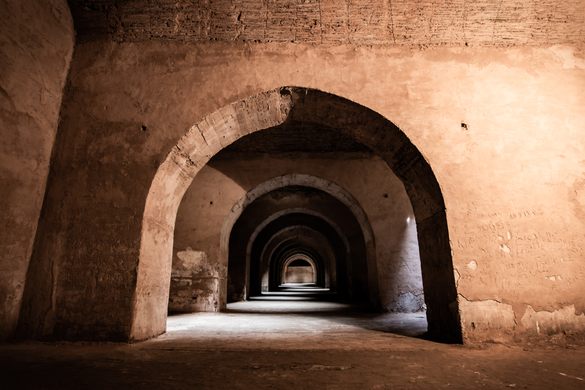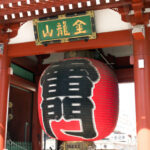PRISON DE KARA, MEKNES (MOROCCO)
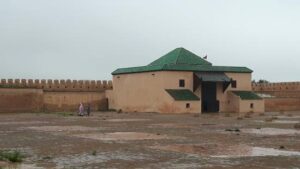 In the heart of Meknes, Morocco, a city teeming with history and hidden gems, there lies a cryptic relic of the past that has long intrigued historians and travelers alike. The Kara Prison, or Habs Qara in Arabic, is a haunting testament to the enigmatic reign of Sultan Ismail bin Sharif during the early 18th century. What makes this underground prison so remarkable is not its imposing doors or fortified bars, but the profound mystery that shrouds its subterranean depths. A place of confinement like no other, the Kara Prison’s very structure is a riddle, leaving us to ponder the tales it holds.
In the heart of Meknes, Morocco, a city teeming with history and hidden gems, there lies a cryptic relic of the past that has long intrigued historians and travelers alike. The Kara Prison, or Habs Qara in Arabic, is a haunting testament to the enigmatic reign of Sultan Ismail bin Sharif during the early 18th century. What makes this underground prison so remarkable is not its imposing doors or fortified bars, but the profound mystery that shrouds its subterranean depths. A place of confinement like no other, the Kara Prison’s very structure is a riddle, leaving us to ponder the tales it holds.
THE REIGN OF SULTAN ISMAIL BIN SHARIF:
To understand the Kara Prison, one must first delve into the turbulent era of Sultan Ismail bin Sharif, who ruled Morocco from 1672 to 1727. Known for his iron-fisted rule and ambitious architectural projects, Sultan Ismail was a figure of both awe and dread. It was during his reign, marked by colossal construction efforts, that the Kara Prison took form.
THE SUBTERRANEAN ENIGMA: 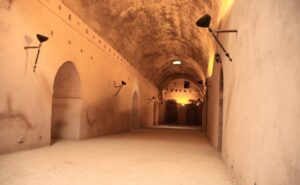
The Kara Prison is unique among prisons, for it was constructed without conventional doors or bars. Instead, its inmates were plunged into a dark and seemingly inescapable abyss. With its subterranean labyrinthine passages and countless cells, it has been compared to a nightmarish underworld. Each cell was a dimly lit, confined space carved directly into the earthen walls.
THE UNBREAKABLE INCARCERATION:
Despite its unconventional design, the Kara Prison is believed to have been escape-proof. The subterranean passages twisted and turned like a maze, designed to disorient prisoners. It’s said that even if an inmate managed to evade the maze-like corridors, the sheer thickness of the prison walls would have been an insurmountable obstacle. Though there is no definitive record of escape attempts, it is widely accepted that none were successful.
THE HISTORICAL MYSTIQUE: 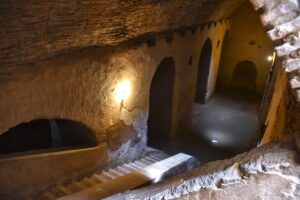
The Kara Prison’s history is steeped in secrecy and shadows. It’s rumored that it housed a mix of political dissidents, criminals, and prisoners of conscience. In the hushed whispers of the city, tales of the suffering and despair that echoed within its walls persist to this day.
REDISCOVERY AND PRESERVATION:
Today, the Kara Prison stands as an enigmatic relic in Meknes, drawing inquisitive visitors and history enthusiasts from around the world. While its purpose was to lock away those who threatened the reign of Sultan Ismail, it now serves as a window into a bygone era, allowing us to contemplate the harsh realities of the past.
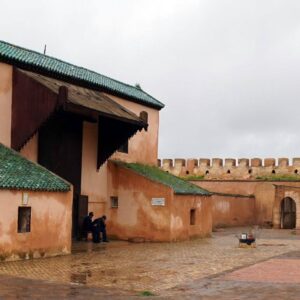 The ongoing preservation efforts aim to ensure that this cryptic labyrinth endures as a historical treasure. As we explore its dimly lit corridors and contemplate the lives that were once confined here, we are reminded of the power of the human spirit and the relentless quest for freedom.
The ongoing preservation efforts aim to ensure that this cryptic labyrinth endures as a historical treasure. As we explore its dimly lit corridors and contemplate the lives that were once confined here, we are reminded of the power of the human spirit and the relentless quest for freedom.
In the heart of Meknes, the Kara Prison is a poignant reminder of a time when darkness enveloped those who dared to defy the Sultan’s rule. Its eerie silence now invites us to reflect on the mysteries of history, leaving us with more questions than answers, and the enduring legacy of Sultan Ismail bin Sharif’s reign in Morocco.

